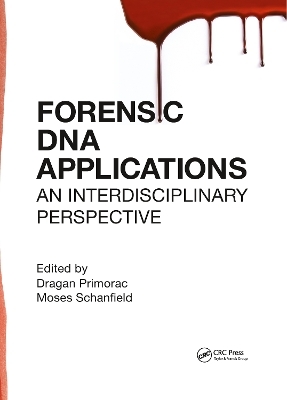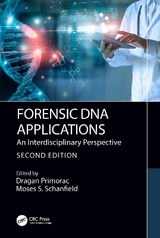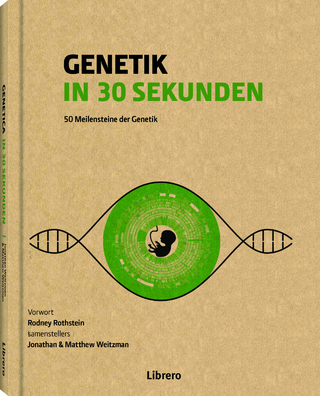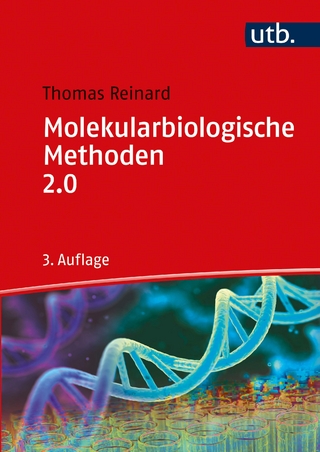
Forensic DNA Applications
CRC Press (Verlag)
978-0-367-77848-4 (ISBN)
- Titel erscheint in neuer Auflage
- Artikel merken
Forensic DNA Applications: An Interdisciplinary Perspective was developed as an outgrowth of a conference held by the International Society of Applied Biological Sciences. The topic was human genome–based applications in forensic science, anthropology, and individualized medicine. Assembling the contributions of contributors from numerous regions around the world, this volume is designed as both a textbook for forensic molecular biology students and a reference for practitioners and those in the legal system.
The book begins with the history and development of DNA typing and profiling for criminal and civil purposes. It discusses the statistical interpretation of results with case examples, mitochondrial DNA testing, Y single nucleotide polymorphisms (SNPs) and short tandem repeats (STRs), and X SNP and STR testing. It also explores low copy number DNA typing, mixtures, and quality assurance and control.
The second section examines the collection and preservation of biological evidence under a variety of different circumstances and the identification of human remains—including in mass disaster settings. It discusses applications to bioterrorism investigations, animal DNA testing in criminal cases, pedigree questions and wildlife forensic problems, applications in forensic entomology, and forensic botany.
The third section explores recent developments and new technologies, including the rigorous identification of tissue of origin, mtDNA profiling using immobilized probe strips, chips and next-generation sequencing, the use of SNPs to ascertain phenotypic characteristics, and the "molecular autopsy" that looks at aspects of toxicogenetics and pharmacogenetics.
The book concludes with a discussion on law, ethics, and policy. It examines the use of DNA evidence in the criminal justice system in both the United States and Europe, ethical issues
in forensic laboratory practices, familial searches, DNA databases, ancestry searches, physical phenotyping, and report writing. The contributors also examine DNA applications in immigration and human trafficking cases and international perspectives on DNA databases.
Dragan Primorac, M.D., Ph.D., is a pediatrician, forensic expert, and geneticist. Currently he serves as an adjunct professor at Eberly College of Science, The Pennsylvania State University, and The Henry C. Lee College of Criminal Justice and Forensic Sciences, University of New Haven in the United States and at Medical Schools in Split and Osijek in Croatia. Professor Primorac is a pioneer in the application of DNA analysis for identification of bodies in mass graves. He authored close to 200 scientific papers, book chapters, and abstracts in areas of forensic science, clinical medicine, molecular genetics, population genetics, genetic legacy of homo sapiens, education, science, and technology policy. Moses S. Schanfield, Ph.D., has undergraduate and master’s degrees in anthropology and a PhD degree in human genetics. He has been involved full time in forensic testing for 30 years. Professor Schanfield has been involved in the development of some of the critical functions of modern forensic DNA testing including the in-lane size ladder, which is used in all human identification testing. He has published extensively on forensic DNA testing and has testified in state, federal, and military courts in the United States and Canada, Puerto Rico, and Barbados.
General Background and Methodological Concepts. Basic Genetics and Human Genetic Variation. Forensic DNA Analysis and Statistics. Forensic Aspects of mtDNA Analysis. Y Chromosome in Forensic Science. Forensic Application of X Chromosome STRs and SNPs. Low Copy Number DN A Profiling. Forensic DNA Mixtures, Approaches, and Analysis. Forensic DNA Typing and Quality Assurance. Uses and Applications. Collection and Preservation of Physical Evidence. Identification of Missing Persons and Mass Disaster Victim. Identification by DNA. Bioterrorism and Forensic Microbiology. Forensic Animal DNA Analysis. Application of DNA-Based Methods in Forensic Entomology. Forensic Botany: Plants as Evidence in Criminal Cases and as Agents of Bioterrorism. Recent Developments and Future Directions in Human Forensic Molecular Biology. Forensic Tissue Identification with Nucleic Acids. Evolving Technologies in Forensic DNA Analysis. Prediction of Physical Characteristics, such as Eye, Hair, and Skin Color Based Solely on DNA. Molecular Autopsy. Genetic Genealogy in Genomic Era. Law, Ethics, and Policy. DNA as Evidence in the Courtroom. Some Ethical Issues in Forensic Genetics. DNA in Immigration and Human Trafficking. DNA Databanking. Index.
| Erscheinungsdatum | 06.04.2021 |
|---|---|
| Verlagsort | London |
| Sprache | englisch |
| Maße | 178 x 254 mm |
| Gewicht | 1732 g |
| Themenwelt | Naturwissenschaften ► Biologie ► Genetik / Molekularbiologie |
| Recht / Steuern ► Strafrecht ► Kriminologie | |
| ISBN-10 | 0-367-77848-3 / 0367778483 |
| ISBN-13 | 978-0-367-77848-4 / 9780367778484 |
| Zustand | Neuware |
| Informationen gemäß Produktsicherheitsverordnung (GPSR) | |
| Haben Sie eine Frage zum Produkt? |
aus dem Bereich



